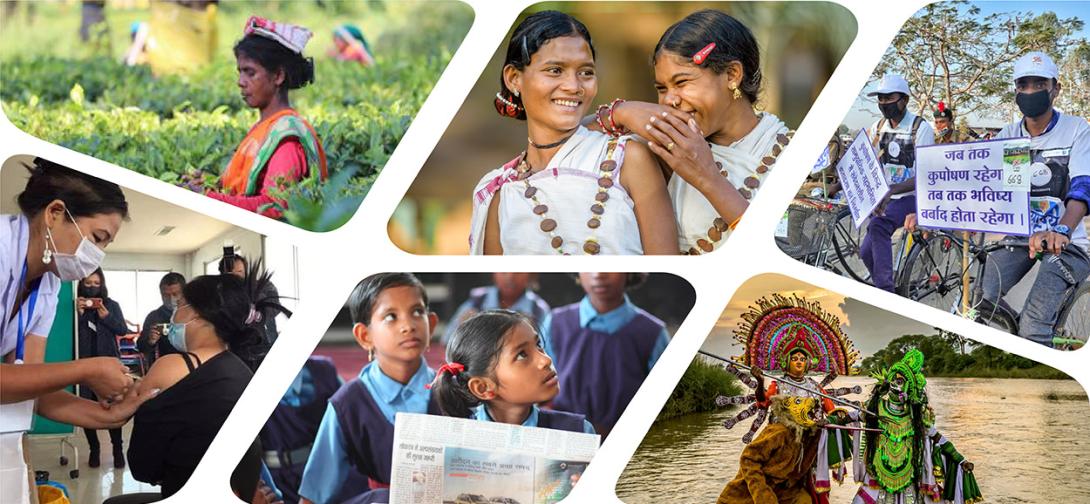The Invisible Crisis: Malnutrition
It is time to think beyond ways to control the spread of infection to addressing malnutrition among vulnerable groups to prevent long term consequences on national economy
Today the world is experiencing an uncomfortable and eerie stillness. The only thing that is rapidly changing is the number of Covid-positive cases and associated mortality. The viral outbreak has unimaginably altered the way we live, think and work. The chaos created by Covid-19 has not only placed unprecedented demands on health systems but also disrupted our social systems and food systems, exposing every individual. India’s timely and stringent decision of a nationwide lockdown has been effective; however, it has adversely affected economic activity, pushing millions towards unemployment and economic distress. As per a World Bank report, lockdown has displaced as many as 40 million migrant workers in India, putting their families at risk of poverty, food insecurity, malnutrition, and mortality.
In India, home to one-third of the world’s stunted, strategies such as prolonged lockdowns are likely to aggravate economic-distress-linked malnutrition rates. These are critical times for everyone, especially infants, young children, and women. Young children are rendered vulnerable by the virtue of lack of autonomy and decision-making power. It has been established that in environments where food constraint is predominant, inequitable intrafamilial food distribution is the leading causes of child malnutrition. Additionally, infectious diseases such as diarrhoea and pneumonia pose a far greater threat than Covid-19 itself.
On average, 9% of total child deaths are attributed to diarrhoeal diseases alone, claiming approximately 300 lives per day; pneumonia on the other hand was responsible for 1,27,000 child deaths in India in 2018, second highest in the world. While, the relationship between malnutrition and Covid infection is still a grey area due to paucity of data, linkage between malnutrition and poor immunity is well established. Further, decline in coverage of essential services such as immunization due to engagement of health workforce in tackling the pandemic increases mortality risk among children, a phenomenon which is being witnessed globally. The official data from Israel indicates a 30% reduction in MMR vaccination due to Covid, whereas India’s report indicate a 69% reduction in MMR in March 2020 compared to previous years. It is feared that in the absence of herd immunity or a vaccine, which may take 12–18 months to develop, the Covid situation is likely to prolong. And in the absence of a calibrated mitigation strategy, we may end up losing more lives to other infections, malnutrition, and maternal complications than saving them from Covid-19.
The response to the Covid-19 emergency has been unparalleled and overwhelming. There has been blanket diversion of resources, both financial and human, towards infection prevention, containment of the virus and vaccine research. While efforts have been made to ensure food security at the household level with an immediate announcement of 1.70 lakh crore relief package under the Pradhan Mantri Garib Kalyan Yojana, doorstep delivery of take-home ration (THR) under ICDS, at the same time the nationwide lockdown has led to discontinuation of maternal, child health and nutrition outreach services and inculcated fear among communities, making it difficult for the vulnerable to seek health and nutrition care. These times are indeed demanding and calls for an optimized resource allocation as well as continuation of essential maternal and child health services, including high impact nutrition interventions highlighted under the POSHAN Abhiyaan for combating the invisible enemy. Greater focus and investment in nutrition is the need of the hour and may also be economically viable in the long term as every $1 dollar invested in nutrition generates an economic return equivalent to $16. Therefore, one must look at this pandemic as a wake-up call to ramp up essential maternal child health services, including nutrition services under Integrated Child Development Services (ICDS) and build equitable, resilient and inclusive systems that integrate nutrition within health, food, social and WASH systems
In the immediate emergency scenario, it appears feasible that Covid-19 surveillance systems, tracking over 9.45 lakh contacts should essentially include families of malnourished children. Secondly, a rapid assessment of acute malnutrition using non-touch methods like Mid-Upper-Arm Circumference tapes to ensure timely care and treatment. This activity can be clubbed with delivery of THR by anganwadi workers. Thirdly, there is a need to establish community-based systems for acute malnutrition management across country to build resilient societies. We can draw learnings from Rajasthan, which is effectively implementing Integrated Management of Acute Malnutrition programme. Fourthly, continuing delivery of essential preventive maternal care services within the norms of social distancing and Infection control is essential. Fifthly, leveraging technology to improve coverage, widening the scope of telemedicine to provide tele-nutriton services for these vulnerable groups presents opportunities. Platforms such as Aarogya setu (primarily designed for contact tracing) shares a user base of nearly 100 million people, can be used for promoting messages around care of pregnant women, newborn and low birth weight and healthy eating habits, besides mobile and radio channels. Lastly, integrating nutrition messages on child food and feeding with WASH messages may prove beneficial without incurring any additional cost.
However, in the longer term, policy reforms may be needed to ensure optimal nutrition for one and all. Agricultural reforms promoting cultivation of nutrient rich varieties, biofortified crops, etc., may contribute to diversifying the food basket of PDS, while reforms in the food industry sector, allowing for commercial production nutritionally adequate food products, which are safe and low cost, may have far reaching benefits in addressing malnutrition in all its forms. Health systems can respond by integrating nutrition at its heart by adapting globally acknowledged Baby friendly Hospital Initiatives and building support systems for promoting, supporting, and protecting infant’s right to breastfeeding.
From where we stand today, it would require doubling of coordinated efforts by government as well as stakeholder for improving the lives of young children and build resilient & COVID sensitive nutrition systems.
*Reema Chugh is an Associate, Health and Nutrition, NITI Aayog. Views expressed are personal.
 National Portal Of India
National Portal Of India 







